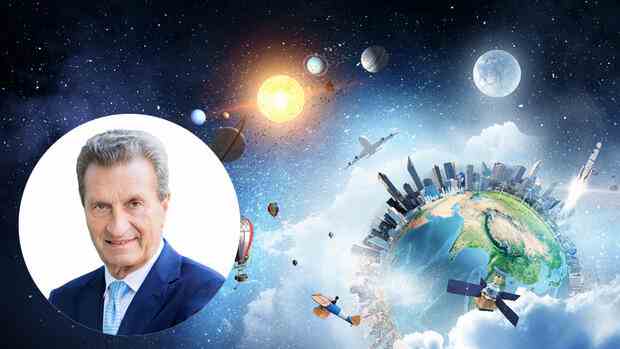Almost two years ago, the European Space Agency (ESA) counted a good 6,350 satellites in orbit, half were still working, the rest is potential scrap. And the space boom has only just begun. The costs of space activities are falling while the number of countries involved in space travel is increasing. In addition, companies are turning the use of space into a business model.
Starlink, space station and freight elevator into space
It’s about opening a new chapter in the history of mankind – whereby the conquest of space brings both opportunities and dangers with it.
Political striving for power and economic interests, such as that of Elon Musk’s SpaceX company, are at play. There is a struggle for raw materials on distant planets, open liability and security questions have to be answered.
In order to bring broadband quality Internet to even the furthest corners of the earth, Musk is working on the world’s largest satellite network with the Starlink project. He already has 2,000 satellites in orbit, and the US space agency Nasa has approved 12,000 more.
The European Union wants to put its own spaceport into operation in Sweden. Japan is building a “cargo elevator” for space that will be used to convey satellites and components for space platforms into orbit like an assembly line.
The United Arab Emirates (UAE) are planning a space center in Dubai in order to be able to earn money from satellite-supported, autonomous driving. The UAE also openly declare that anyone who is able to park cars with centimeter precision can steer drones to their destination just as precisely.
Saudi Arabia’s Crown Prince Salman is also building his own space center with his petrodollars. After the foreseeable end of the fossil age, Riyadh wants to get involved in the race for raw material resources on distant planets – and not leave the business to the USA, Russia or China.
Ownership of space still unclear
But who actually owns space, its resources and technical possibilities? Basically every country. This is what the Outer Space Treaty says, which was agreed upon in 1967 by the then superpowers USA and the Soviet Union under the aegis of the UN.
At that time, both had to reckon with the fact that the other would be the first to land on the moon and take possession of the celestial body for his country – just like Christopher Columbus, the discoverer of America, had done on earth centuries earlier.
The WVR practically declared space a demilitarized zone, in which no nuclear weapons may be stationed. The model was the treaty banning nuclear tests under water, in the atmosphere and in space, which the USA, the Soviet Union and Great Britain had brought to the United Nations.
In view of the technological development, the WVR now has dramatic gaps. So when the treaty was signed, no one was thinking about space debris. The Soviet satellite Sputnik, which had set the world in turmoil in 1957, burned up again in the earth’s atmosphere after three months. The internet and digitization did not exist. In 1967, no one could have guessed that satellites would have to be protected because their failure would throw digitized economies into turbulence.
While tech giants and the major space nations have long been on their way to distant planets, the international community has so far given little thought to who owns the raw materials there.
The one who gets there first? Or should resources be distributed more fairly? Only the UN can decide on a legal framework.
We need a new, comprehensive space treaty for the 21st century. As with climate protection, the EU should become the driving force behind this development. Especially in times of war on earth one hopes for peace, at least in space.
The author: Günter H. Oettinger is President of United Europa eV He was Prime Minister of Baden-Württemberg and EU Commissioner.
More: Space: Mission into the Unknown – How Russia’s War Changed Space Travel
